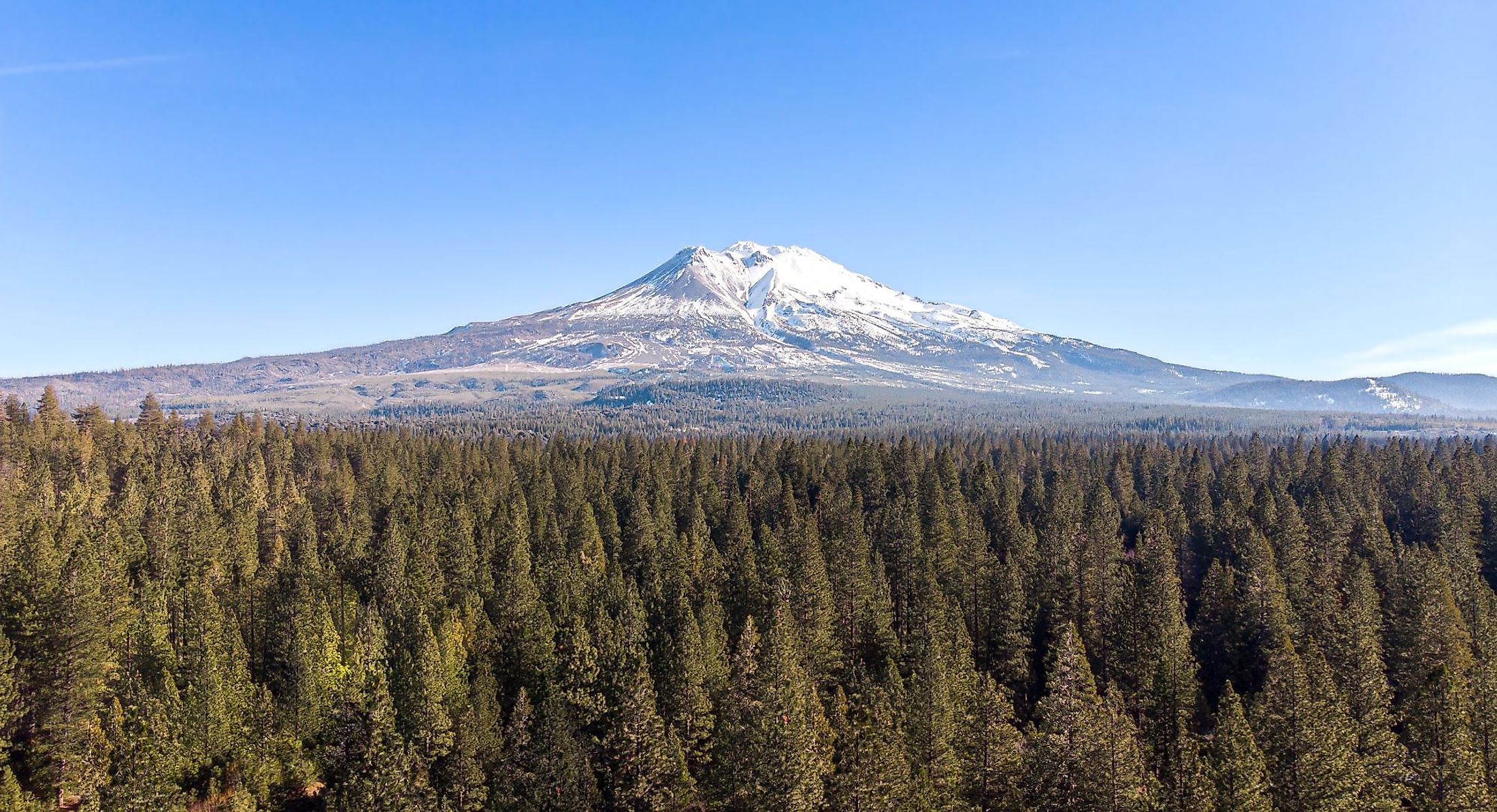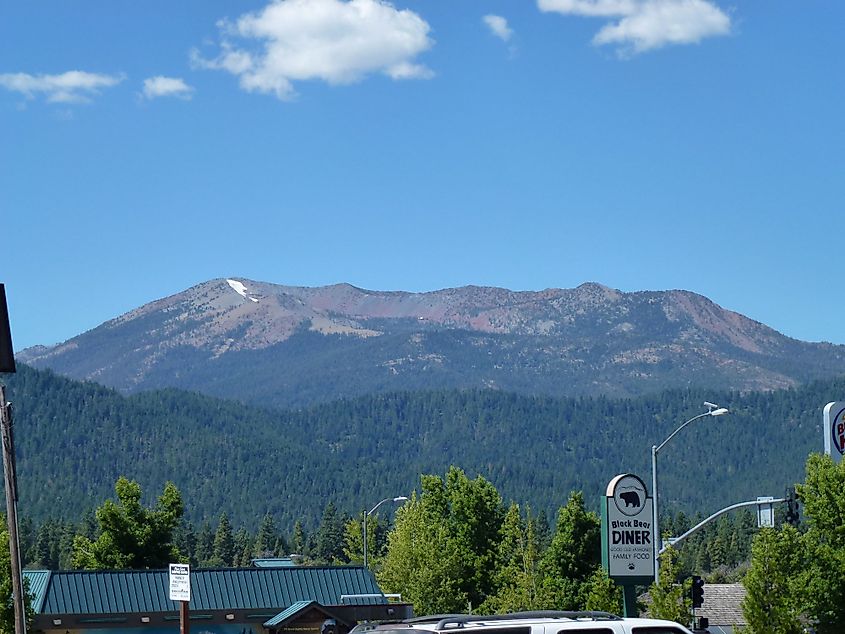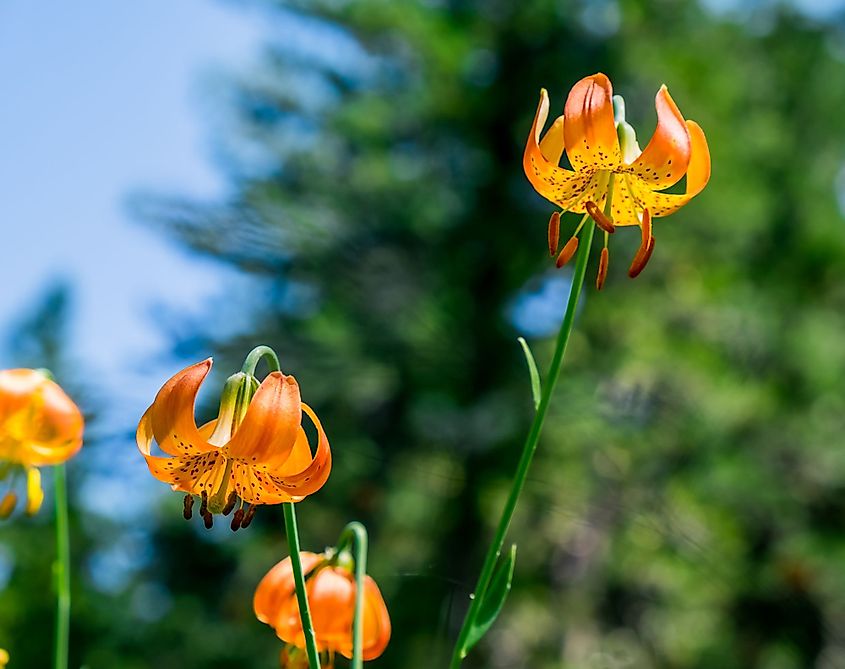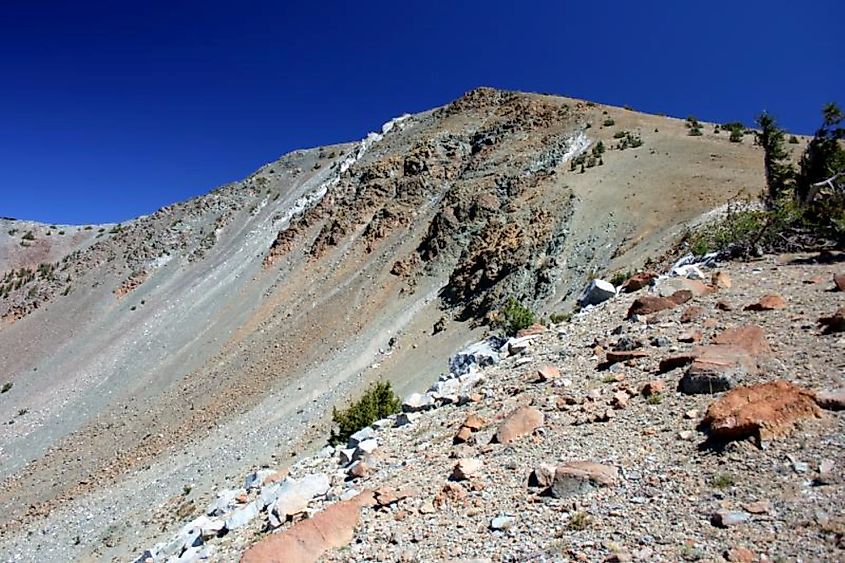
Mount Eddy, California
Mount Eddy is the Trinity Mountains' highest peak that is located in the northern portion of the US State of California. Many indigenous species thrive along the creeks and fens. In the middle of summer, various butterfly species swarm the wildflowers, making the mountain a favorite among curious botanists and hikers. This area is ideal for a long day hike or backpacking excursion because of the diverse plant life, picturesque alpine lakes, and breathtaking views of Mount Shasta and Castle Crags.
Geography Of Mount Eddy

In California's Siskiyou and Trinity Counties, the Trinity Mountains, a part of the Klamath Mountains System, have Mount Eddy as their highest peak. It is located west of Mount Shasta and has a height of 2,754m. The mountain is located in the Shasta-Trinity National Forest, a division of the United States Forest Service, in Mount Eddy RNA, a Research Natural Area. The top can be reached through the Mt. Eddy Trail. The view from the peak is quite amazing, even though it is not as impressive as the surrounding Trinity Alps or neighboring Mount Shasta.
The southern Cascades, which stretch from Mount Lassen to Mount McLoughlin, and practically the whole Klamath Mountains are seen with a single head turn from Mount Eddy. By elevation, Mount Eddy is the highest point out of 730 mountains in the Klamath Mountains, 3574 mountains in the Northwest U.S. Coast Ranges, and 280 mountains in Trinity County. On the other hand, it is the eighth highest out of 446 mountains in Siskiyou County and 337 mountains in the Shasta-Trinity National Forest.
Etymology And Geology Of Mount Eddy
Mount Eddy was named in honor of Olive Paddock Eddy, who married pioneer Nelson Harvey Eddy in 1854. The couple's only possessions when they arrived in Siskiyou County in 1856 were a yoke of oxen and a single cow. They started living at the foot of the mountain and prospered as farmers and ranchers.
Peridotite, a volcanic type of serpentine, is responsible for the formation of Mount Eddy about 400 million years ago. Due to the ultramafic rock's high magnesium and low calcium content, most plants find this soil to be an unfavorable growing medium. Similar to other serpentine regions, this leads to some plants evolving to become endemic to the area by adapting to the severe conditions and profiting from the relative lack of competition. The rock's reddish hue results from the rusting of the iron it contains.
Climate Of Mount Eddy
According to the Köppen climate classification, Mount Eddy has a Warm-Summer Mediterranean Climate, with hot, dry summers and cold, rainy winters. The average annual temperature is 11°C, with July and December recording the highest (23°C) and lowest (2°C) average temperatures, respectively. On average, Mount Eddy gets 176.5 mm of precipitation yearly, with December being the wettest month.
Wildlife In Mount Eddy

Plenty of wildlife is found in this area, both in the faunal and floral realms. Red and white fir are both plentiful (especially at the trail's lower elevations), and other varieties of pine are also present. The carnivorous pitcher plant, a pretty unique species found in the region, may be spotted in a number of bog areas towards the start of the trek. The region has deer, squirrels, and frogs (esp. at Upper Deadfall Lake). The millipedes, scorpions, and large toads that occasionally cross the trail come out at night. Fortunately, there aren't many bears in the area, so there are fewer safety precautions to take than in many other places.
Mount Eddy Summit Trail

The hike up to the peak is an enjoyable one. The first 1,000 feet of the route from the Deadfall Meadows Trailhead will rapidly acquaint you with the meadow. When attempting to cross Deadfall Creek and the nearby marshes in the spring or early summer, hikers may even get their feet wet. Soon after the meadow, the trail ascends to higher land, and you will enjoy a gentle rise into the glacially formed Deadfall Basin. You will come into contact with the Pacific Crest Trail about 1.5 miles into the hike. About 2.5 miles into the walk, you'll come upon Upper Deadfall Lake. You can take a break at this lake and enjoy your best view of Mount Eddy yet. Backpackers can camp here or move 800 feet due south to discover another lake. The trail continues until it reaches the peak of the Trinity Divide. The Sisson-Callahan National Recreation Route descends east toward Lake Siskiyou, and a spur trail climbs north to Mount Eddy at Deadfall Summit (8,020 feet), where the trail splits. After pushing through the final trail intersection, which is 1.1 miles away, you will reach the summit. On top of the summit, there are the remains of an old lookout in addition to breathtaking views.
Mount Eddy has more to offer than just the stunning vistas it provides from its peak. Along with several lakes and meadows, it also includes boisterous creeks. Mount Eddy continues to be a constant presence whether trekking on Mount Shasta or somewhere else in the Trinity Divide. There is no doubt that this mountain is extraordinary and deserves praise.











